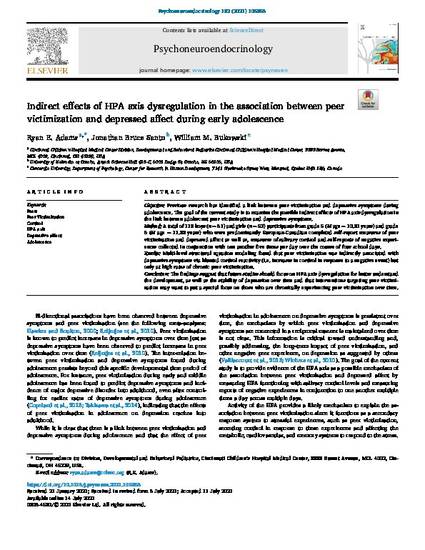
Article
Indirect effects of HPA axis dysregulation in the association between peer victimization and depressed affect during early adolescence
Psychoneuroendocrinology
(2021)
Abstract
Objective: Previous research has identified a link between peer victimization and depressive symptoms during adolescence. The goal of the current study is to examine the possible indirect effects of HPA axis dysregulation in the link between adolescent peer victimization and depressive symptoms.Method: A total of 113 boys (n = 61) and girls (n = 52) participants from grade 5 (M age = 10.31 years) and grade 6 (M age = 11.33 years) who were predominantly European-Canadian completed self-report measures of peer victimization and depressed affect as well as, measures of salivary cortisol and self-reports of negative experi- ences collected in conjunction with one another five times per day over the course of four school days. Results: Multi-level structural equation modeling found that peer victimization was indirectly associated with depressive symptoms via blunted cortisol reactivity (i.e. increases in cortisol in response to a negative event) but only at high rates of chronic peer victimization.
Conclusion: The findings suggest that future studies should focus on HPA axis dysregulation for better understand the development, as well as the stability of depression over time and that interventions targeting peer victimi- zation may want to put a special focus on those who are chronically experiencing peer victimization over time.
Disciplines
Publication Date
2021
Citation Information
Jonathan Bruce Santo. "Indirect effects of HPA axis dysregulation in the association between peer victimization and depressed affect during early adolescence" Psychoneuroendocrinology (2021) Available at: http://works.bepress.com/jonathan_santo/58/
